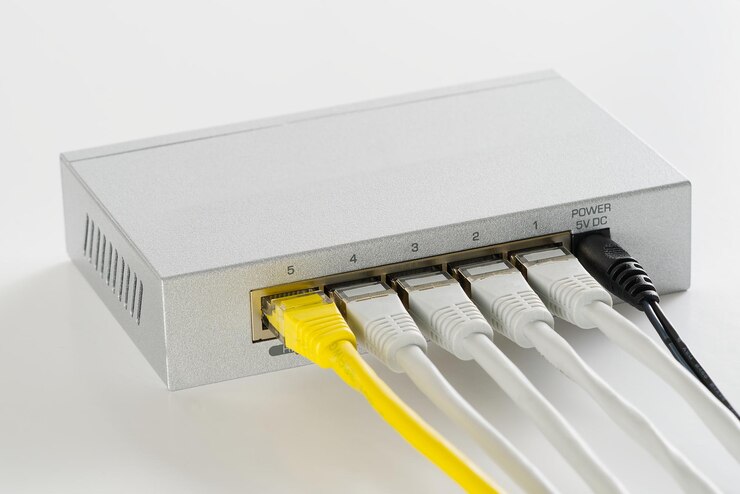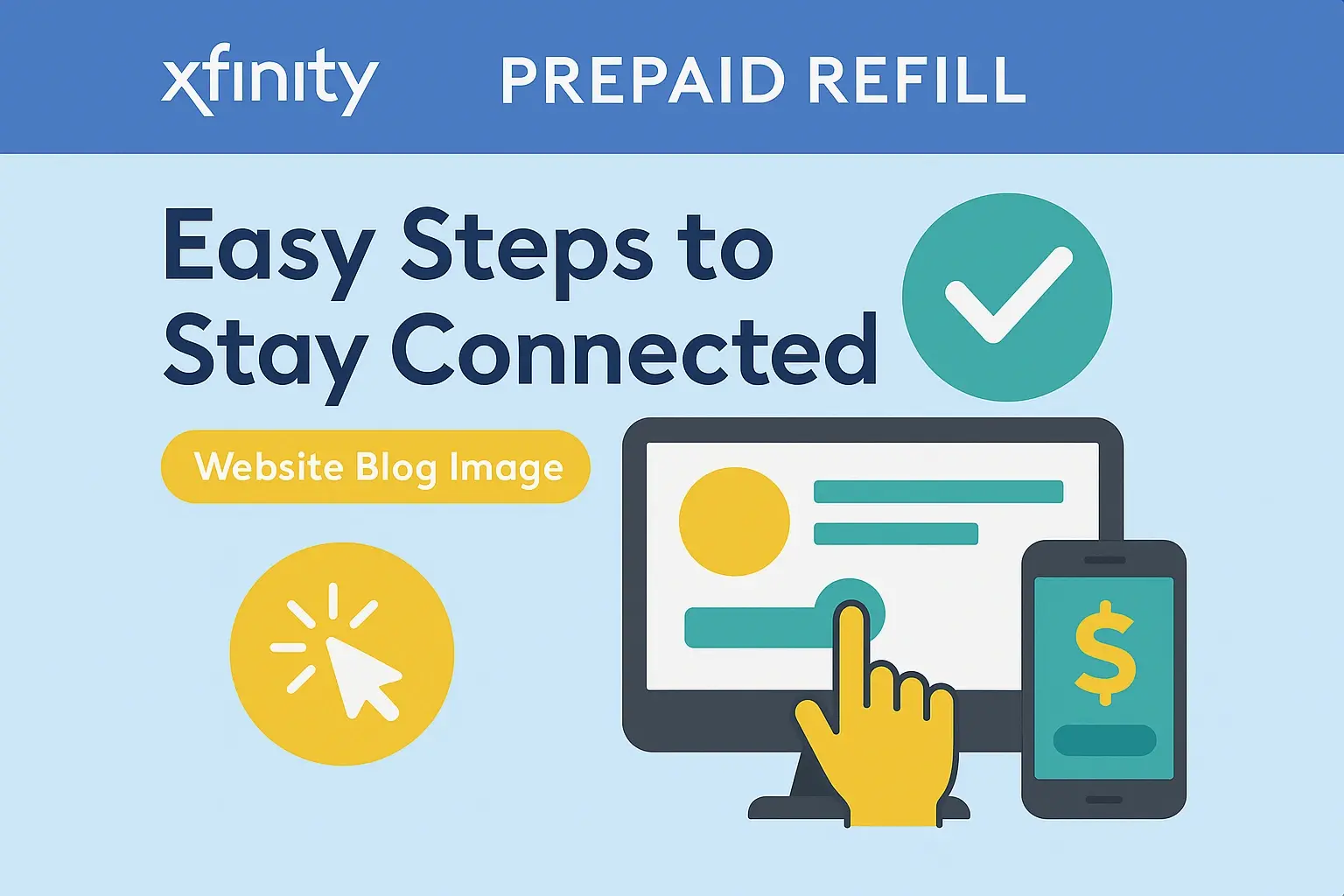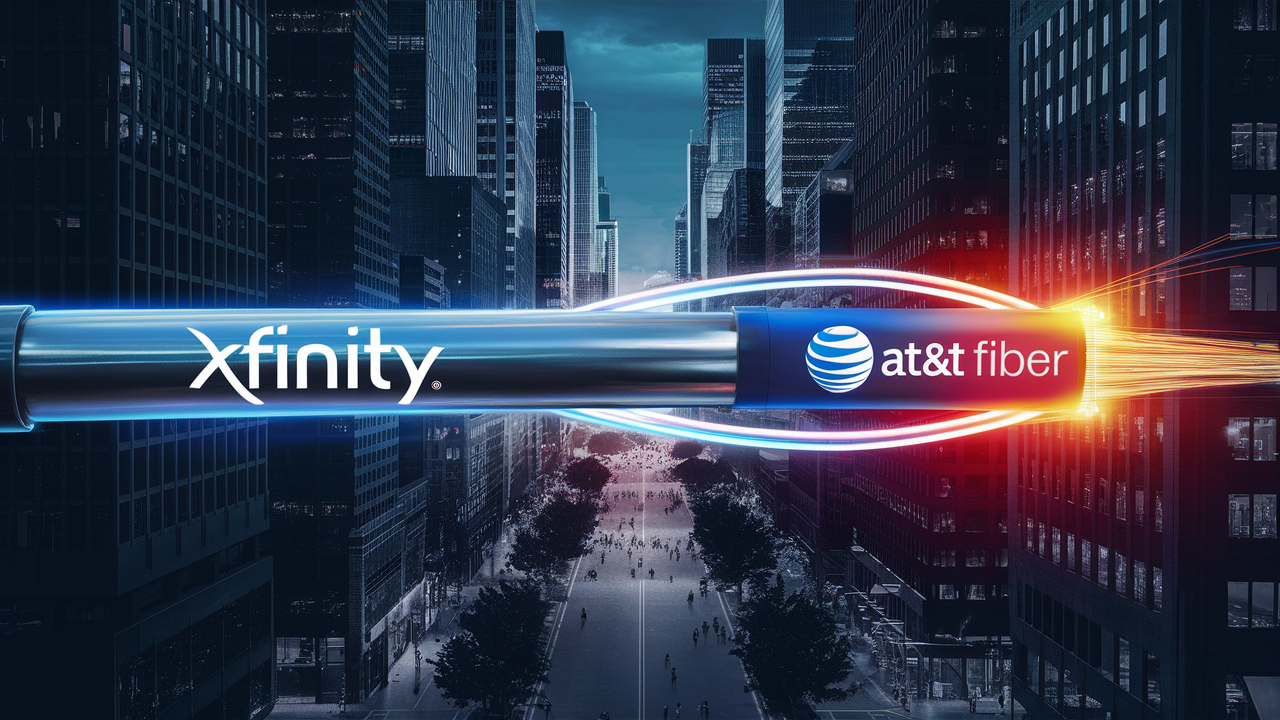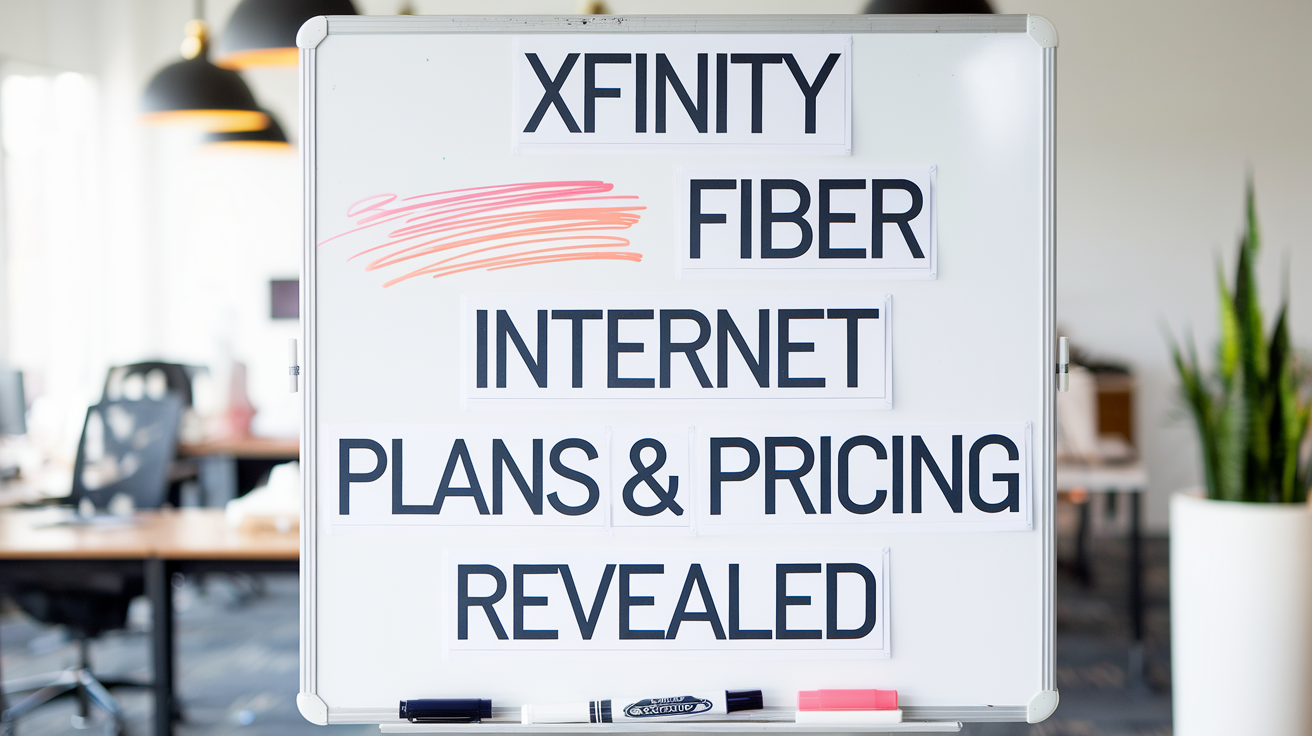Xfinity Cable Box Setup: Everything You Need to Know

Setting up your new Xfinity cable box can seem daunting, but this comprehensive guide breaks down every step. We'll cover unboxing, connections, activation, and troubleshooting, ensuring you're watching your favorite shows in no time. Get ready for a seamless Xfinity experience.
Understanding Your Xfinity Equipment
Before you even touch a cable, it's crucial to understand the components that make up your Xfinity service. Xfinity offers a range of equipment, primarily centered around their cable boxes, which are the gateway to your television and internet services. These devices are not just simple tuners; they are sophisticated pieces of technology that manage your cable signal, provide access to On Demand content, and often integrate with your home internet for streaming and interactive features.
The Xfinity Cable Box: Core Functionality
At its heart, an Xfinity cable box (also known as a set-top box or receiver) decodes the digital signals sent by Comcast to your home. This allows you to view channels, access your subscribed programming, and use features like the Electronic Program Guide (EPG). Modern Xfinity boxes are digital, meaning they provide a much clearer picture and sound quality compared to older analog systems. They also enable features like High Definition (HD) and Ultra High Definition (UHD) viewing, depending on the box model and your subscription package.
Key Components You'll Encounter
When you receive your Xfinity equipment, you'll typically find a few key items:
- The Cable Box: This is the main unit. It comes in various models, from basic HD boxes to advanced X1 DVRs (Digital Video Recorders).
- Power Cord: Essential for powering up the cable box.
- Remote Control: The primary interface for navigating menus, changing channels, and controlling playback.
- HDMI Cable: The standard for connecting your cable box to your television for high-quality audio and video.
- Coaxial Cable: This is the cable that brings the cable signal from your wall outlet to the back of the cable box.
- Ethernet Cable (Optional): Some boxes may include or recommend an Ethernet cable for a more stable internet connection, especially for advanced features and streaming.
- User Manual: A guide specific to your equipment model.
Xfinity X1 Platform
Most modern Xfinity installations utilize the Xfinity X1 platform. This is a cloud-based operating system that provides a unified experience for TV, On Demand, streaming apps, and voice control. Understanding X1 is key to unlocking the full potential of your Xfinity setup. It allows for personalized recommendations, easy searching across live TV, On Demand, and streaming services, and integration with smart home devices.
DVR Functionality
Many Xfinity cable boxes are DVRs, allowing you to record live TV. This feature is invaluable for busy households, enabling you to watch your favorite shows on your schedule. DVRs come with varying storage capacities, so understanding how much recording space you have is important. You can typically record multiple shows simultaneously and manage your recordings through the X1 interface.
Before You Begin: Essential Preparation
A smooth Xfinity cable box setup hinges on proper preparation. Taking a few minutes to gather what you need and prepare your space will prevent frustration and potential delays. This section outlines the crucial steps to ensure your installation process is as seamless as possible.
Confirm Your Xfinity Service is Active
The most critical prerequisite is ensuring your Xfinity service is activated and ready to go in your home. If you've just signed up, Xfinity will provide an activation date. Double-check this date and confirm with Xfinity customer service if you have any doubts. Attempting to set up equipment before service activation will result in an unsuccessful installation.
Gather Your Xfinity Equipment and Accessories
Before you start connecting anything, lay out all the components that came in your Xfinity package. This includes the cable box itself, the power adapter, the remote control, batteries for the remote, the coaxial cable, and the HDMI cable. Having everything within reach will streamline the physical setup process. If any items are missing, contact Xfinity customer support immediately.
Locate Your Cable Outlet and Power Source
You'll need to position your cable box near a functional coaxial cable outlet and a power outlet. The coaxial outlet is where the signal enters your home. Ensure the cable outlet is accessible and not damaged. The power outlet should also be within reach of the provided power cord. Consider the placement of your television as well; the cable box should ideally be placed near your TV for easy connection.
Identify Your Television's HDMI Port
Modern cable boxes connect to televisions via HDMI cables for the best audio and video quality. Before you begin, locate the available HDMI ports on the back or side of your television. You'll need to know which port you plan to use so you can easily connect the HDMI cable from the cable box to the TV.
Check Your Wi-Fi Network (If Applicable)
While not strictly necessary for basic cable TV functionality, many Xfinity boxes, especially X1 devices, leverage your home internet for advanced features like streaming apps, On Demand content, and software updates. Ensure your Wi-Fi network is operational and you know your network name (SSID) and password. This will be needed during the activation and setup process if your box requires an internet connection.
Clear the Area Around Your TV and Cable Outlet
Make sure there's enough space around your TV and the cable outlet to comfortably place the cable box and manage the cables. A cluttered setup can lead to poor ventilation for the box and make future troubleshooting more difficult. Aim for a clean, organized installation.
Have Your Xfinity Account Information Ready
During the activation process, you may need to provide your Xfinity account number or other identifying information. Having this readily available will expedite the activation. You can usually find this information on your Xfinity bill or by logging into your Xfinity account online.
The Unboxing and Physical Setup
With your preparation complete, it's time to physically set up your Xfinity cable box. This involves carefully unpacking the equipment and making the necessary connections. Follow these steps meticulously for a straightforward installation.
Unpacking Your Xfinity Equipment
Gently open the Xfinity box. Remove the cable box, power cord, remote control, and any included cables (HDMI, coaxial). If there's a user manual, set it aside for reference, though this guide should cover most scenarios. Inspect all components for any signs of damage that may have occurred during shipping. If you find any issues, contact Xfinity support.
Connecting the Coaxial Cable
Take the coaxial cable. One end will screw into the coaxial outlet on your wall. The other end connects to the "Cable In" or "RF In" port on the back of your Xfinity cable box. Ensure both ends are screwed in snugly but not overly tight. A loose coaxial connection is a common cause of signal issues.
Connecting the HDMI Cable
Locate the HDMI port on your television that you identified earlier. Connect one end of the HDMI cable to this port. Connect the other end of the HDMI cable to the "HDMI Out" port on the back of your Xfinity cable box. HDMI cables are keyed, so they will only fit one way, preventing incorrect insertion.
Connecting the Power Cord
Plug the power cord into the designated power port on the back of the cable box. Then, plug the other end into a working electrical outlet. Avoid using surge protectors that might interfere with the device's power draw, unless specifically recommended by Xfinity. Ensure the cable box is powered on.
Setting Up the Remote Control
If your remote control requires batteries, insert them now. Most Xfinity remotes are pre-programmed or require a simple pairing process during activation. If your remote doesn't seem to work initially, don't worry; it will likely be addressed during the activation step.
Positioning Your Cable Box
Place the cable box in a well-ventilated area, ideally near your television. Avoid placing it in enclosed cabinets or stacking other electronics directly on top of it, as this can lead to overheating. Ensure the front display of the box is visible if it contains status indicators.
Initial Power On and Display
Once everything is connected, turn on your television and select the correct HDMI input source that corresponds to the port you used for the cable box. Then, press the power button on your Xfinity cable box. You should see a light indicator turn on, and the TV screen should display an Xfinity logo or a welcome message, indicating the box is receiving power and starting up.
Connecting Your Xfinity Cable Box: A Step-by-Step Guide
This section provides a detailed, sequential guide to physically connecting your Xfinity cable box to your TV and the wall outlet. Following these steps precisely will ensure a correct and stable connection, laying the groundwork for successful activation.
Step 1: Locate Your Coaxial Outlet
Identify the coaxial cable outlet on your wall. This is typically a small, round port with a threaded connector. Ensure it's not damaged and is easily accessible.
Step 2: Connect the Coaxial Cable to the Wall
Take one end of the provided coaxial cable. Carefully screw this end onto the coaxial outlet on your wall. Turn it clockwise until it feels secure. Do not overtighten, as this can damage the threads.
Step 3: Connect the Coaxial Cable to the Cable Box
Locate the "Cable In" or "RF In" port on the back of your Xfinity cable box. This port will also have a threaded connector. Screw the other end of the coaxial cable onto this port. Again, tighten it gently until snug.
Step 4: Connect the HDMI Cable to the Cable Box
Find the "HDMI Out" port on the back of your cable box. Plug one end of your HDMI cable into this port. Ensure it's inserted fully.
Step 5: Connect the HDMI Cable to Your Television
On your television, locate an available HDMI input port. These are usually labeled "HDMI 1," "HDMI 2," etc. Plug the other end of the HDMI cable into the chosen HDMI port on your TV. Note which HDMI port you used.
Step 6: Connect the Power Adapter
Plug the small end of the power adapter into the power port on the back of the cable box. Then, plug the other end of the power adapter into a functioning wall electrical outlet. Ensure the outlet is not controlled by a light switch that could be accidentally turned off.
Step 7: Power On Your Television
Turn on your TV using its remote control. Using your TV's remote, navigate to the input or source selection menu. Select the HDMI input that corresponds to the port where you connected the cable box (e.g., if you used HDMI 2, select HDMI 2).
Step 8: Power On Your Xfinity Cable Box
Locate the power button on your Xfinity cable box or its remote. Press it to turn the box on. You should see a power indicator light illuminate on the front of the box. Your TV screen should now display the Xfinity startup sequence, typically showing the Xfinity logo followed by a loading or initialization screen.
Step 9: Verify Connections
Before proceeding to activation, take a moment to ensure all cables are securely connected. A loose cable is the most frequent culprit for setup failures. If the screen remains blank or shows an error message, re-check all connections, especially the coaxial and HDMI cables.
Activating Your Xfinity Cable Box: Bringing it to Life
Once your Xfinity cable box is physically connected, the next crucial step is activation. This process registers your equipment with Xfinity's network and enables your service. The Xfinity X1 platform typically guides you through this with an on-screen process.
Understanding the Activation Process
Activation involves your cable box communicating with Xfinity's servers to confirm your subscription and provision your services. This usually requires an internet connection for X1 boxes. The process can take anywhere from 15 minutes to an hour, depending on network traffic and the specific equipment.
On-Screen Activation for Xfinity X1
For most Xfinity X1 boxes, the activation process is largely automated and guided by on-screen prompts. Once the box powers up and connects to the network, you should see a welcome screen or a prompt to begin activation.
- Follow the Prompts: Carefully read and follow the instructions displayed on your TV screen. This will likely involve confirming your account details, selecting your language, and agreeing to terms of service.
- Network Connection: If your box requires an internet connection, it will attempt to connect to your home Wi-Fi network. You may be prompted to enter your Wi-Fi password. Ensure your Wi-Fi is active and you have the correct password. If you have a wired Ethernet connection, the box may detect it automatically.
- Software Updates: During activation, the cable box will download and install any necessary software updates. This is a critical step for ensuring optimal performance and access to the latest features. Do not unplug the box during this process.
- Channel Scan: After software updates, the box will perform a channel scan to identify and load all the channels available in your subscription package.
Alternative Activation Methods
In some cases, or if the on-screen activation encounters issues, Xfinity may provide alternative activation methods:
- Xfinity App: The Xfinity app on your smartphone or tablet can often be used to initiate and manage the activation process for new equipment.
- Online Activation Portal: You may be directed to a specific Xfinity website where you can log in with your account credentials to activate your equipment.
- Phone Activation: If all else fails, you can call Xfinity customer support and follow their automated system or speak with a representative to activate your cable box over the phone.
What to Expect During Activation
Be patient. The activation process can involve several stages, including initial boot-up, network configuration, software downloads, and channel tuning. Your TV screen may go blank periodically, or display progress bars. This is normal. Avoid pressing too many buttons on the remote or unplugging the equipment unless specifically instructed to do so.
Post-Activation Checks
Once the activation process appears complete, you should see a functional Xfinity interface on your TV. Try tuning to a few different channels to ensure they are all working. Access the guide to see if program information is loading. Test the remote control to confirm it can change channels and adjust volume.
Troubleshooting Activation Issues
If activation fails, the most common reasons are:
- Service Not Activated: Confirm your Xfinity service is active.
- Loose Cables: Double-check all coaxial and HDMI connections.
- Internet Connectivity Issues: Ensure your Wi-Fi is working or your Ethernet connection is stable.
- Equipment Malfunction: In rare cases, the box itself might be faulty.
If you encounter persistent activation problems, contact Xfinity support. They can check your service status, remotely diagnose the box, and guide you through further steps.
Troubleshooting Common Xfinity Cable Box Setup Issues
Even with careful setup, you might encounter minor hiccups. This section addresses the most frequent problems users face during Xfinity cable box setup and provides practical solutions to get you back on track.
No Signal or "No Service" Message
Cause: This is the most common issue and usually stems from a connectivity problem.
Solutions:
- Check Coaxial Cable: Ensure the coaxial cable is securely screwed into both the wall outlet and the cable box. A loose connection is the primary culprit.
- Check HDMI Cable: Verify that the HDMI cable is firmly plugged into both the cable box and the TV. Try a different HDMI port on your TV.
- Verify TV Input: Make sure your TV is set to the correct HDMI input source that the cable box is connected to.
- Power Cycle the Box: Unplug the power cord from the cable box, wait 30 seconds, and plug it back in. This simple reboot can resolve many temporary glitches.
- Check Outlet: Ensure the wall outlet itself is active. If you have other cable devices, test them.
Picture Freezing or Pixelation
Cause: Poor signal quality, often due to a damaged coaxial cable, loose connections, or interference.
Solutions:
- Inspect Coaxial Cable: Look for any kinks, cuts, or damage to the coaxial cable. Replace it if it appears compromised.
- Tighten Connections: Ensure all coaxial connections are snug.
- Reduce Cable Length: If possible, use the shortest coaxial cable that reaches from the wall to the box without being taut.
- Check for Interference: Ensure the cable box is not placed near devices that can cause electromagnetic interference, such as microwaves or cordless phones.
Remote Control Not Working
Cause: Dead batteries, pairing issues, or physical obstruction.
Solutions:
- Replace Batteries: The simplest solution is to try fresh batteries.
- Check Line of Sight: Ensure there's a clear path between the remote and the cable box. Remove any obstructions.
- Re-pair the Remote: Consult your Xfinity remote's manual for specific pairing instructions. This often involves holding down certain buttons. For X1 remotes, try holding the "Exit" and "Info" buttons simultaneously for a few seconds.
- Test the Remote: Point the remote at your phone's camera while pressing a button. If you see a light flash on your phone screen, the remote is transmitting a signal.
Activation Failure
Cause: Service not fully active, incorrect account information, or network issues.
Solutions:
- Confirm Service Activation: Double-check with Xfinity that your service is active at your address.
- Restart the Process: Power cycle the cable box and try the activation steps again.
- Use Alternative Activation: Try activating via the Xfinity app or the online portal if the on-screen method fails.
- Contact Xfinity Support: They can verify your account status and remotely assist with activation.
Wi-Fi Connectivity Issues for X1 Boxes
Cause: Incorrect Wi-Fi password, weak signal, or router problems.
Solutions:
- Verify Wi-Fi Password: Ensure you are entering the correct Wi-Fi password. Passwords are case-sensitive.
- Router Proximity: Place the cable box closer to your Wi-Fi router, or consider a Wi-Fi extender if the signal is weak.
- Reboot Router and Modem: Power cycle your modem and router, then reboot the cable box.
- Use Ethernet: For the most stable connection, consider connecting the cable box directly to your router with an Ethernet cable if possible.
Audio Issues (No Sound or Distorted Sound)
Cause: Incorrect audio settings, faulty HDMI cable, or TV settings.
Solutions:
- Check TV Volume: Ensure your TV's volume is not muted or set too low.
- Check Cable Box Audio Settings: Navigate to your cable box's settings menu and verify that the audio output is set correctly (e.g., stereo, surround sound).
- Test HDMI Cable: Try a different HDMI cable.
- Test Different TV Input: Connect the cable box to a different HDMI port on your TV.
Advanced Tips and Optimizations for Your Xfinity Setup
Once your Xfinity cable box is up and running, you can enhance your viewing experience with a few advanced tips and optimizations. These suggestions focus on maximizing performance, utilizing features, and ensuring a smooth, long-term setup.
Optimizing Your Xfinity X1 Experience
The Xfinity X1 platform is designed for intuitive use, but understanding its nuances can unlock its full power.
- Voice Control: If your remote has a microphone button, use voice commands! Press the button and speak clearly. You can search for shows, change channels, find movies by actor, and even control playback ("pause," "rewind"). For example, try saying "Find action movies" or "What's on tonight?"
- Personalization: X1 learns your viewing habits to offer personalized recommendations. Ensure your profile is set up correctly within the X1 interface.
- Xfinity App Integration: Download the Xfinity app on your smartphone or tablet. You can use it as a remote control, manage DVR recordings remotely, and even stream live TV and On Demand content when away from home.
- Explore Apps: X1 integrates popular streaming apps like Netflix, YouTube, and Pandora. Access them directly from the X1 interface without needing a separate streaming device.
Enhancing Your Home Network for Xfinity
A robust home network is essential for the full functionality of modern Xfinity equipment, especially X1 boxes.
- Wired vs. Wireless: While Wi-Fi is convenient, a wired Ethernet connection from your router to your cable box (if supported) offers superior stability and speed, reducing buffering and improving streaming quality.
- Router Placement: If relying on Wi-Fi, ensure your router is centrally located and not obstructed. Consider upgrading your router to a newer model that supports Wi-Fi 6 or 6E for better performance.
- Modem/Router Health: Regularly reboot your modem and router. Ensure your modem is capable of handling the speeds provided by your Xfinity plan.
Managing Your DVR and Recordings
If you have a DVR, efficient management is key.
- Series Priority: When recording a series, Xfinity X1 allows you to set recording priorities (e.g., record new episodes only, record all episodes, record only the first airing). This helps manage storage space.
- Delete Old Recordings: Regularly delete recordings you've watched to free up space for new ones.
- Remote Recording: Use the Xfinity app to schedule recordings while you're away from home.
Understanding Your Xfinity Subscription
Ensure you know what channels and features are included in your plan.
- Channel Lineup: Access your channel lineup through the Xfinity website or the X1 guide to see what's available.
- On Demand Library: Explore the vast On Demand library for movies, TV shows, and special programming available with your subscription.
- Upgrade Options: If you find yourself wanting more channels or features, review Xfinity's package upgrade options.
Software Updates and Maintenance
Xfinity cable boxes receive automatic software updates to improve performance and add new features. Ensure your box remains connected to power and the internet (if applicable) to receive these updates. Occasionally, a manual reboot might be recommended by Xfinity support.
Using the Xfinity My Account App
The "Xfinity My Account" app is a powerful tool for managing your service. You can check for outages, view your billing, troubleshoot equipment, and even schedule technician appointments. Familiarize yourself with its features.
Xfinity Equipment Options and Comparisons (2025 Insights)
Xfinity offers a variety of equipment to suit different needs and budgets. Understanding these options can help you choose the best fit for your household. As of 2025, the landscape of cable boxes continues to evolve, with a strong emphasis on integrated smart features and cloud-based services.
The Xfinity X1 Platform: The Standard
The Xfinity X1 platform remains the cornerstone of Xfinity's TV service. It's a cloud-powered operating system that provides a unified experience for live TV, On Demand, DVR, and streaming apps. Most new installations will receive an X1-compatible device.
Key X1 Devices
- Xfinity Xi6/XiOne Streaming TV Boxes: These are smaller, wireless streaming TV boxes that act as clients to a primary X1 DVR. They require an internet connection and are ideal for secondary TVs in the home. They offer a full X1 experience without the need for a coaxial cable connection to each box.
- Xfinity XG1/XG1v4 DVRs: These are the primary, high-performance DVRs that serve as the hub of your X1 system. They have built-in tuners and significant storage capacity for recordings. The XG1v4 models offer 4K UHD capabilities.
- Xfinity Flex (Now part of X1): While previously a separate streaming-only device, Flex functionality is now largely integrated into the X1 experience. Flex devices were primarily for internet-only customers to access streaming services and Xfinity apps over IP.
Comparison Table: X1 DVR vs. Xi Streaming Box
Here's a simplified comparison to illustrate the differences:
| Feature | Xfinity XG1/XG1v4 DVR | Xfinity Xi6/XiOne Streaming Box |
|---|---|---|
| Primary Function | Main hub, DVR, tuner | Secondary TV access, streaming |
| Connection Type | Coaxial and HDMI | Wi-Fi or Ethernet, and HDMI |
| Recording Capability | Yes (built-in storage) | No (relies on primary DVR) |
| 4K UHD Support | Yes (XG1v4 models) | Yes |
| Internet Required | Recommended for full features | Required |
| Typical Use Case | Living room, main TV | Bedrooms, secondary TVs |
Xfinity Internet Equipment (Modems & Gateways)
While this guide focuses on cable boxes, it's worth noting that your internet service is crucial for many Xfinity box features. Xfinity offers:
- Modems: Devices that connect your home to Xfinity's network.
- Gateways: All-in-one devices that combine a modem and a Wi-Fi router. Xfinity often encourages renting their gateways to ensure compatibility and easier troubleshooting.
As of 2025, Xfinity continues to push DOCSIS 3.1 and DOCSIS 4.0 modems for higher speeds. Ensure your modem or gateway is compatible with your internet plan.
Key Considerations for 2025
- Cloud DVR: While Xfinity still offers local DVR storage, the trend is towards cloud DVR solutions. This allows for more flexibility and access to recordings across devices.
- IP-Based Delivery: More services are being delivered over the internet protocol (IP), meaning a stable internet connection is increasingly vital for all Xfinity services, not just streaming apps.
- 4K and HDR Content: With the proliferation of 4K TVs, Xfinity is increasingly supporting 4K UHD and HDR content, requiring compatible X1 boxes (like the XG1v4) and TVs.
- Smart Home Integration: X1 is becoming a central hub for smart home control, integrating with voice assistants and other connected devices.
Choosing the right equipment often depends on the number of TVs you have, your internet speed, and whether you prioritize DVR functionality or streaming capabilities. Xfinity's website provides detailed specifications for each device, and customer service can help you select the best option for your specific needs.
Conclusion
Setting up your Xfinity cable box is a straightforward process when approached systematically. From understanding your equipment and preparing your space to making the physical connections and completing the activation, each step is designed to be user-friendly. We've covered everything from the initial unboxing to troubleshooting common issues and optimizing your Xfinity X1 experience for 2025. Remember that a stable coaxial connection and a reliable internet connection are paramount for enjoying all the features Xfinity has to offer, especially the advanced capabilities of the X1 platform.
By following the detailed guides and tips provided, you can ensure a smooth and successful setup, minimizing potential frustrations. Should you encounter any persistent problems, don't hesitate to leverage Xfinity's support resources, including their app, online portal, or customer service. Enjoy your enhanced entertainment experience with Xfinity!





